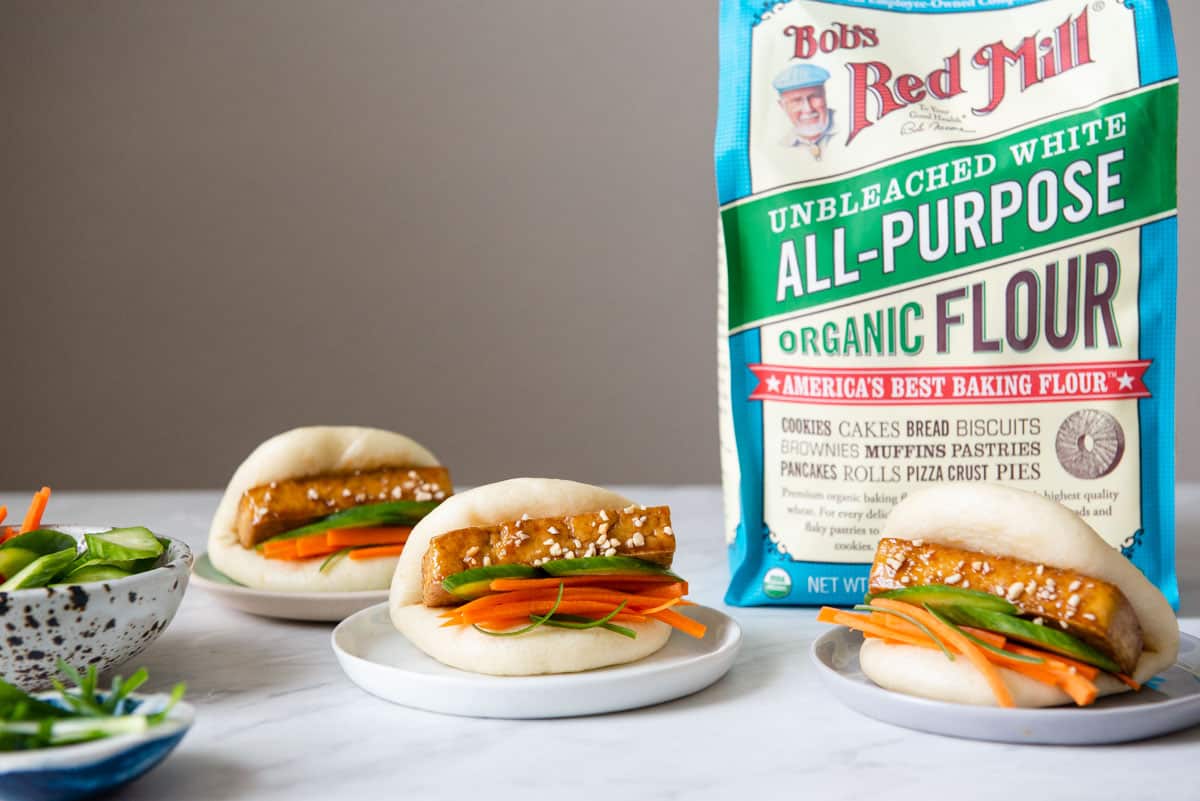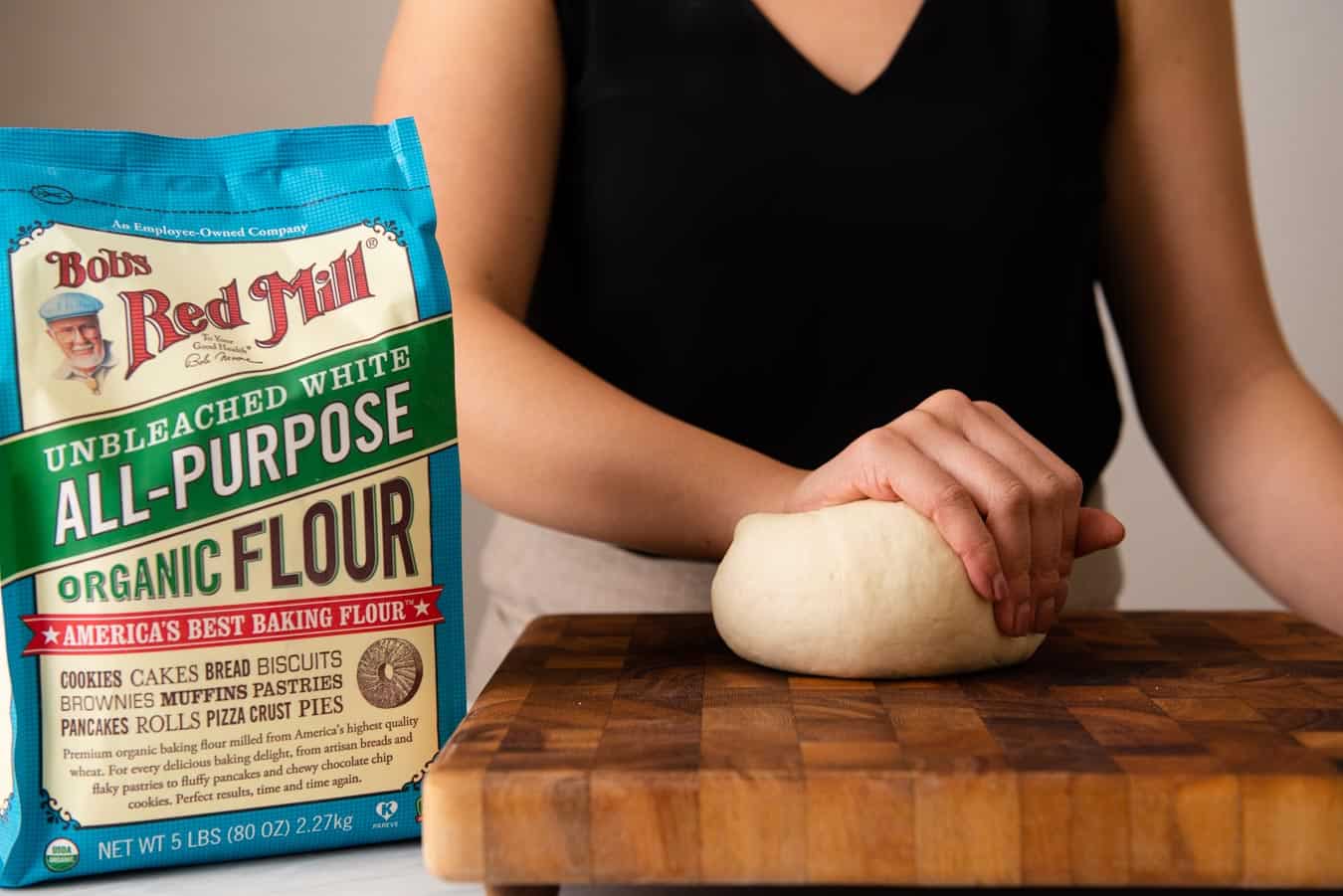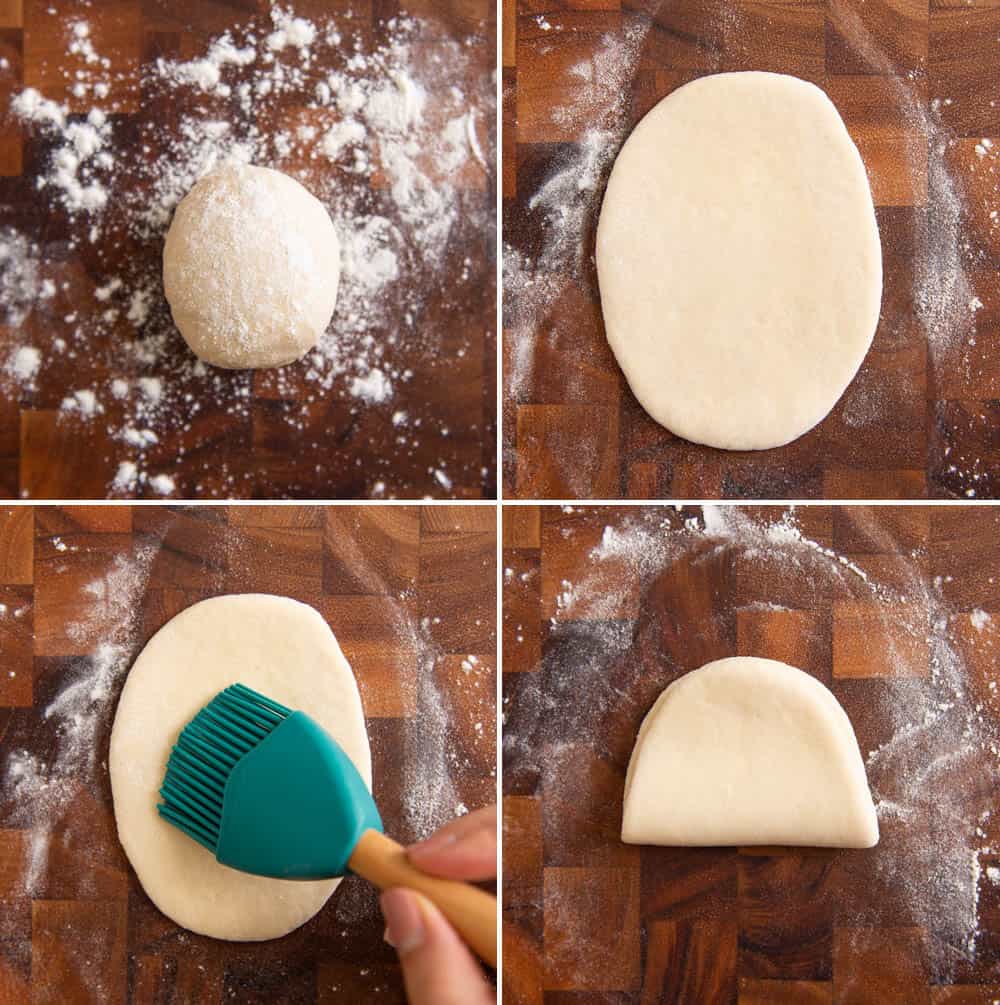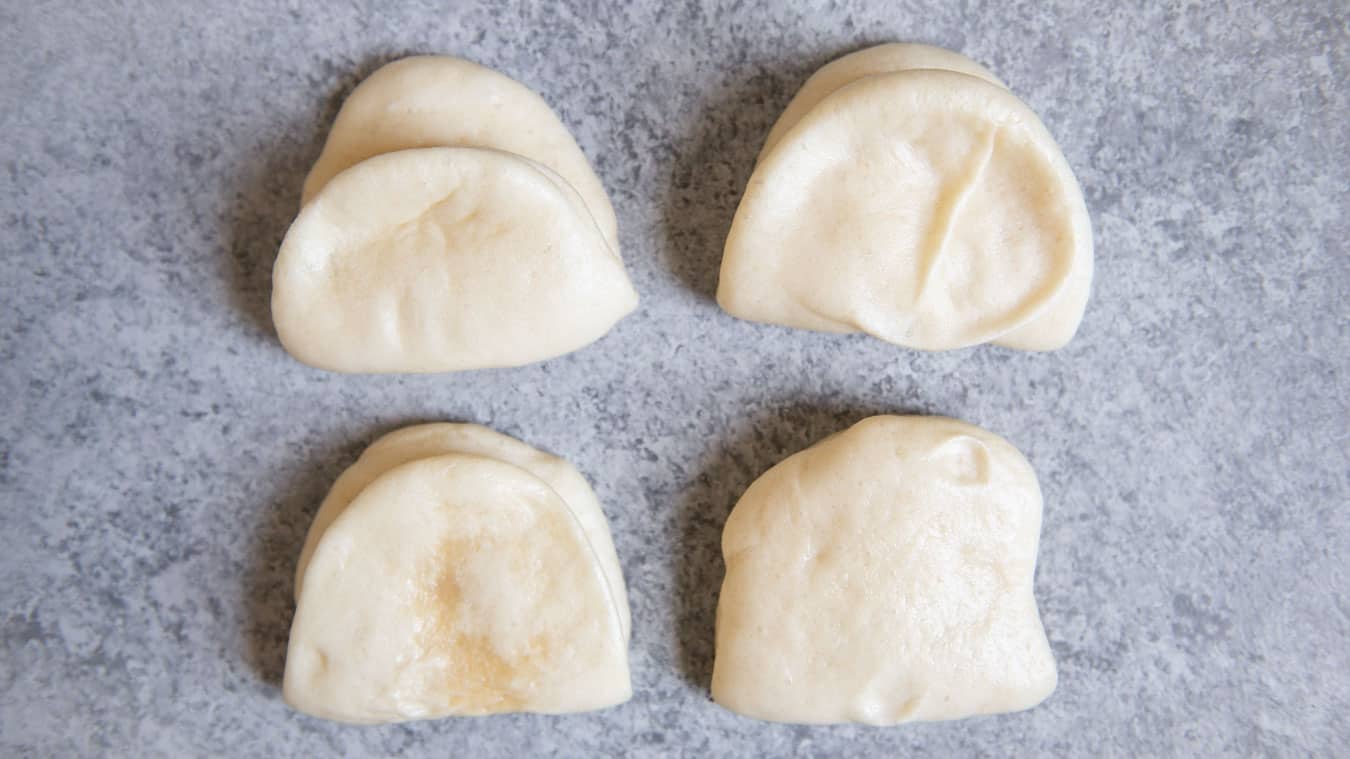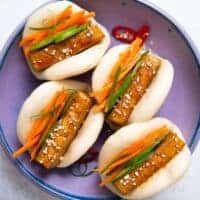If you’ve ever eaten Peking duck at Cantonese restaurants, you’ll be familiar with lotus leaf steamed buns (he ye bao,荷葉包). They are soft steamed buns (or bao) that are folded in half. That way, you can fill the buns with filling like meat and vegetables to serve. These lotus leaf buns are also used as the vessel for gua bao (割包). Gua bao is a dish that originated in China’s Fujian Province but made popular with Taiwanese street food. The filling of gua bao usually consists of braised pork, preserved vegetables, and a few other toppings. In this vegetarian version, I am filling the buns with my pan-fried teriyaki tofu and a few quick pickled vegetables. The key to success for the teriyaki tofu gua bao are getting the steamed buns right. It all starts with the flour for the dough. Here, I used Bob’s Red Mill’s Organic Unbleached White All-Purpose Flour, which yields steamed buns with a nice light color. The dough has great elasticity so that the shaping of the buns was quite simple. Once steamed, the buns were light and fluffy, just the way I like them. The trickiest part about making the bao is the steaming. It took me 9 or 10 tries to get these bao right, so I have a lot of tips to share!
TERIYAKI TOFU GUA BAO COOKING NOTES
MAKING THE DOUGH
The dough needs to be leavened to give the bao a soft texture when steamed. I tried several types of leavening agents: dry yeast, instant yeast, and baking powder. During my recipe testing, I found that I liked the results of dry yeast the most. The bao gets great flavor from the yeast and the texture of the bao is light and fluffy. When testing this teriyaki tofu gua bao recipe, I mistakenly added too much sugar to the dough. I thought the bao tasted great with 1/4 cup of sugar. However, that amount of sugar makes the yeast too active. As a result, air bubbles formed in the bao after steaming them. For the longest time, I couldn’t figure out what I was doing wrong. Then it finally dawned on me that I was using too much sugar. One tablespoon of sugar in this recipe will be sufficient.
SHAPING THE BAO
Once the dough has proved for an hour, punch down the dough to get rid of the excess air. Then, divide the dough into 12 pieces of about 43g to 45 grams each. Take each piece of dough, shape it into a ball, and roll out into an oval of about 4.5 inches long and 3 to 3.5 inches wide. Lightly dab the surface of the dough with oil, fold in half, and place the bao into a bamboo steamer basket. I steam the buns 4 at a time to get consistent results. You can stack 2 steamer baskets and cook 8 at a time. As the first batch of buns are steaming, the dough will rise again. In order to prevent the unshaped dough from overproving, I usually leave the dough in a bowl, cover it with a damp towel or plastic wrap, and let it sit in the refrigerator. This will slow down the proving process.
USING A STEAMER BASKET
I highly recommend using a bamboo steamer basket to steam the bao. Because the lids of these steamers are made of woven bamboo, the steam will either get absorbed by the bamboo lid or escape from the sides and the top. This is important to creating steamed buns with a smooth surface. For one of my test batches, I steamed the buns with my wok that had a glass lid. A lot of condensation built up on the lid and dripped back onto the buns, causing “burn marks” on the buns (see photo above bottom row, left). What I should have done was tie a large towel around the lid so that it absorbs the steam as it rises.
COOKING AT THE RIGHT HEAT
Another important factor is using the right amount of heat to steam the buns. If the heat is too high, your buns will inflate too quickly. You can see that in the buns on the top row in the photo above. As a result, the edges of the buns will be too puffy or the buns can deflate at the end, causing the surface to wrinkle. If the heat is too low, you buns will not fully cook. I prefer using medium to medium-low heat for steaming. Everyone’s stove is slightly different, so there may be a bit of trial and error before you figure out the right amount of heat for steaming. After the buns are done steaming, the buns need to rest for 10 minutes. DO NOT lift the lid of the steamer basket too soon or the buns can deflate (like the photo above, top row, right). (By the way, for reference, the bao in the bottom row, right, illustrates what happens when you use too much sugar in the dough. You can see small air pockets that bubble up and deflate.)
WATCH HOW TO SHAPE THE BAO
Disclosure: This post was sponsored by Bob’s Red Mill! To learn more about their products and to get more recipe inspiration, follow them on Instagram or Facebook.

